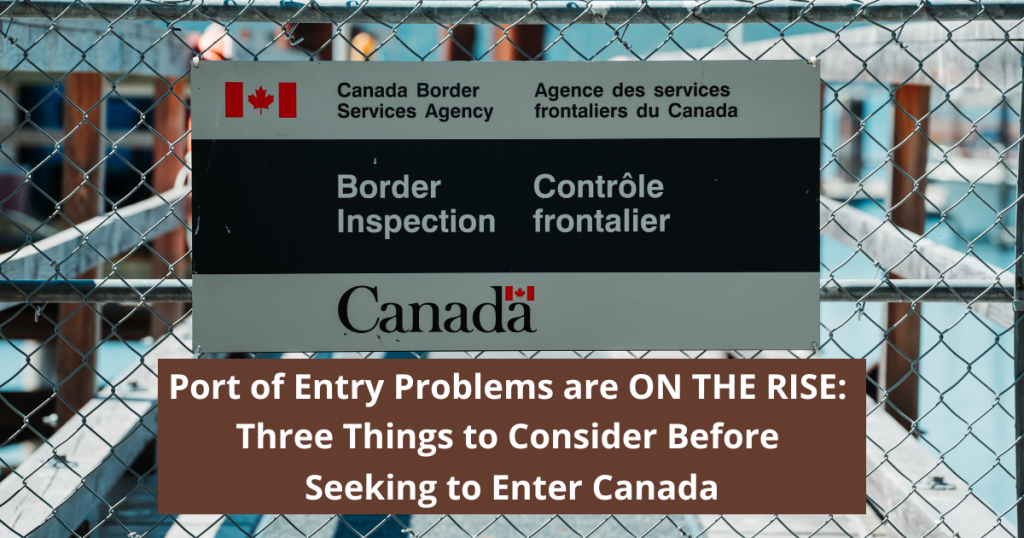
At Heron Law Offices, we have seen an uptick in issues with Applicants seeking entry or re-entry into Canada, even holding valid approvals and permits. In this blog, we review a few common scenarios and some steps you can take to prepare yourself and reduce risks on your next border entry.
Rising Issues at Port of Entry
Over the course of the past several months, we have seen a major increase in the number of applicants who are running into issues seeking entry to Canada at land and air borders (Port of Entries or “POEs”). The common scenario is these individuals are holding approval letters, valid visas and permits, and or seeking to make an application at the POE. Instead, they are being issued allowed-to-leave letters, temporary resident permits, being furthered for examination (i.e. allowed entry on for purposes of examination), or being issued short-term visitor records. As common knowledge, just because one holds an Immigration, Refugees and Citizenship Canada (“IRCC”) approval letter or permit, the ultimate decision on whether to admit a foreign national is made by the Canada Border Services Agency (“CBSA”). For permanent residents, the CBSA Officer has the ability to engage in investigations and examinations upon entry. For this blog, we will primarily focus on temporary residents.
With the increasing use of automation and information sharing between IRCC and CBSA, these applicants are finding out that their permits, visas, and eTAs are being cancelled shortly thereafter. While it appears that this process of whether to cancel a permit is still discretionary (and indeed the subject of a current regulatory amendment consultation), applicants often feel as though they are caught off guard with the process having not been able to make their case at the border, nor later.
The “heat” at the border is not surprising. We are simultaneously seeing steps taken to dissuade and prevent port-of-entry applications (see. e.g. for PGWPs recently announced). Amidst labour disputes and what appears to be a significant misalignment on policy and practice between IRCC and CBSA, it is natural that Border Services Officers (“BSOs”) will perform their own assessment. I had an off-the-record conversation with a colleague who was at an IRCC/CBSA consultation where tensions arose around knowledge and understanding of how these automated decision-making systems are working. Apparently, there is a belief that applicants are not being properly vetted and that the automation of eligibility has led to automation complacency, particular on the review of application documentation.
Regardless of what is going on internally, the external consequences are having a major impact. Folks are being asked to leave Canada (and in some cases removed). With eTAs/TRVs cancelled (often in processes that have provided for limited procedural fairness), these individuals will face challenges seeking to return as temporary residents. We are already seeing refusal letters issued on the basis of ‘past non-compliance‘ which as a trend could make fighting these cases more difficult, albeit more necessary.
There are a few common pitfalls we are seeing at the port-of-entry and thought an informative blog post might be helpful. So here are THREE helpful tips for those seeking entry at the POE.

TIP #1 – (FOR EXTENSION/RESTORATION ELIGIBLE APPLICANTS ESPECIALLY) – ASK YOURSELF DO YOU REALLY HAVE TO BE THERE?
This one seems self-evident but is actually not. For various reasons (oftentimes long processing times by IRCC), folks are being recommended to go down to the port of entry to make applications. However, there are many questions to ask before a decision is made to go. First, particularly if you are out of status, in the process of restoration, or making an application such as a Temporary Resident Permit (“TRP”) – the decision to leave while having a history of non-compliance could come into play. The same thing could go with individuals who are seeking to switch between visitor and work permit statuses. These cases of flagpoling will often trigger concerns and it cannot be assumed that your materials with IRCC are known to CBSA.
Furthermore, some folks – particularly those who do not present well – cannot speak English for example or maybe communities that are historically scrutinized, it may be worth asking whether you want your case to be decided by an off-chance officer or you want to make sure all your evidence is before the decision-maker.
TIP #2 – HAVE EVERYTHING WITH YOU, KNOW EVERYTHING ABOUT YOUR FILE
Increasingly, individuals are having trouble at the Port of Entry because they do not know their own file. They may have engaged an agent or consultant overseas to prepare the file only on the on the basis of questionnaires or WhatsApp/WeChat submitted responses. This is a huge risk. At the very least, applicants should have a full copy.
Likewise, if you are a student travelling (especially during the school term) you should know about the actively-pursuing studies requirement and the type of evidence possibly needed if requested by an Officer. This issue has recently re-emerged as a port of entry concern after a shift to inland enforcement, and folks are being issued removal orders and allowed to leaves.
Think about also if there are collateral issues that might be at play. Are you subject to criminal charges? Are you the client of an agent/consultant who may be under investigation? Are there possible other inadmissibility concerns at play (security/organized criminality/human rights etc.) Are you entering Canada alongside a family member who themselves may be of concern? Are you in the security screening process for permanent residency? Is there an enforcement flag on your file?
These questions can all factor into possible concerns and the need to be prepared when seeking entry.
TIP #3 – KNOW WHEN TO ENGAGE COUNSEL’S SUPPORT TO FIGURE OUT YOUR OPTIONS
Checking in with legal counsel before entering Canada is becoming more and more important, given CBSA is making decisions that may be a re-evaluation of IRCC’s initial approval.
As alluded to earlier, one of the common trends we are seeing is applicants being denied entry and/or being issued allowed to leaves followed by a s.23 IRPA further examination. This one is tough as ‘legally’ you are treated as if you are outside Canada and have either been denied entry or withdrawn your entry. Often times individuals are given a short period of time to get their affairs in order before leaving. However, unlike a situation where you can extend or apply inside Canada for some sort of relief (TRP), when you are furthered you don’t have that opportunity. Figuring out how to navigate this situation is becoming increasingly crucial, particularly in light of considering possible return plans and strategies.
For many applicants, the best time to have engaged counsel was even before entry – even if just for a border entry conversation. While you think these are routine, many immigration agents and practitioners end their file and engagement as soon as the decision is made. In our opinion, that is now only 70% of the way there, given the ever-increasing role of the 30% that is border entry. This becomes even more true if there are changes in circumstances between approval and entry into Canada or between leaving and re-entering.
At the back end, engaging counsel, for example to attend a port-of-entry interview or a pre-removal meeting, can at least ensure that everything is done by the book, that you have access to translation, and that decisions will be clearly communicated. Our office recently took on a case where deferral was ultimately not successful, but for the first time, the Applicant felt they were entitled to due process rather than a rushed process of removal and denial as they had previously experienced.
It is such a crucial time with increased and heightened scrutiny on applicants for immigration. At Heron Law Offices, we’re taking extra steps to study the interactions, develop new strategies, and comment on trends we are seeing. We hope this blog has been helpful in this regard.



